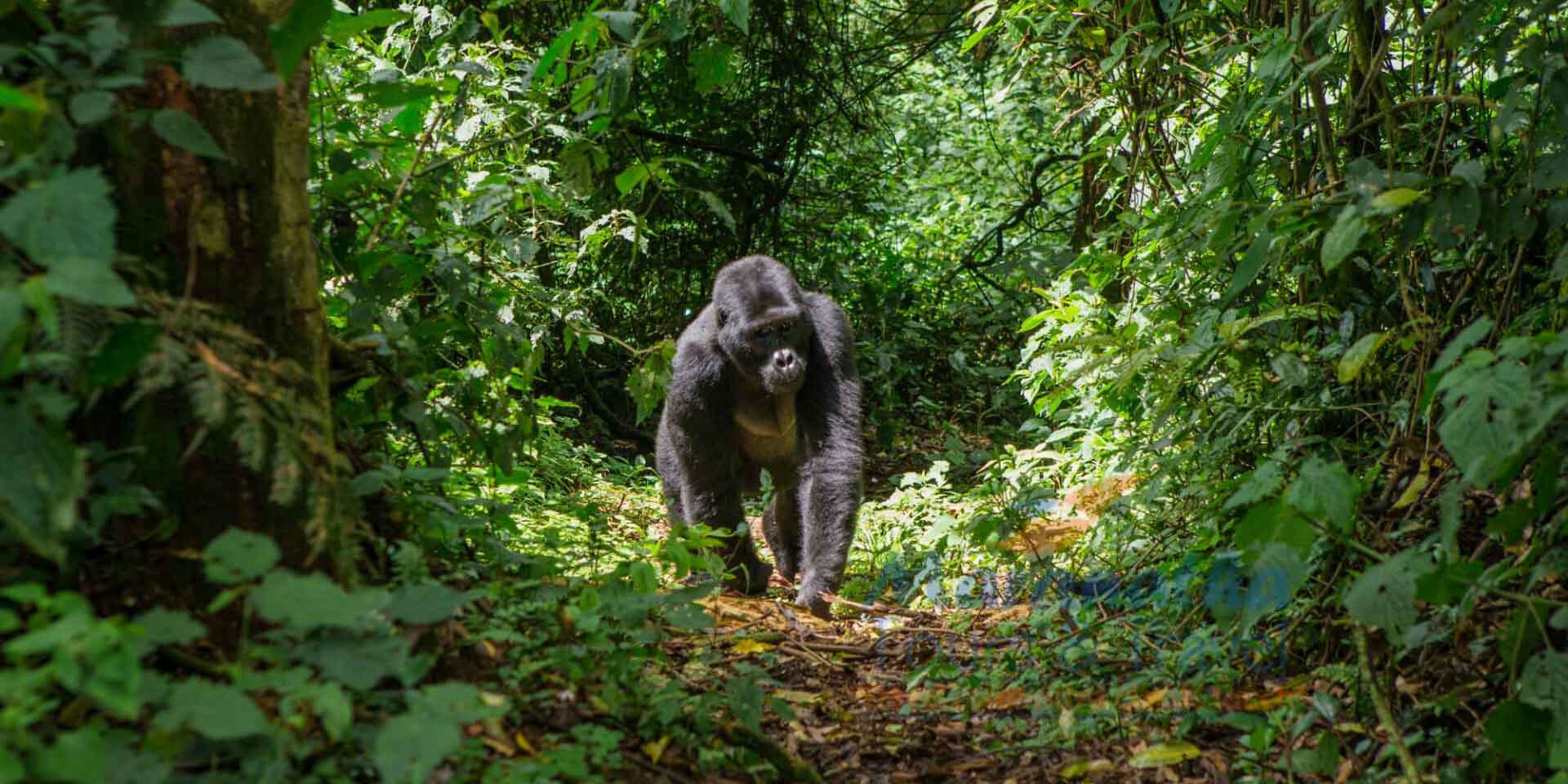How do Mountain Gorillas Communicate?
Have you ever wondered how our close relatives in the jungles of East-Central Africa communicate with each other? These interesting creatures share about 98% of DNA with humans and you will be surprised at how they are so much like us, in so many ways. These creatures live in closely-knit social groups with unbroken hierarchies, using several ways of communicating to each other.

Gorilla Trekking in Bwindi Impenetrable National Park
Given the fact that these Great Apes live within the dense rainforests, high in the mountains where it is difficult to see each other, vocalizations are the main means of communicating and interacting among members. In line with their significant role as Group leaders and decision-makers, silverback gorillas are interestingly the ones who communicate/vocalize the most often.
For the newborn gorillas, vocalizations are in form of screaming, whimpering, and crying, which they use to attract the attention of their mothers to attend to their needs-feeding, being lifted or simply throwing temper tantrums. The older they get, gorillas begin detaching themselves from their mothers and start using other vocalizations, especially grunting. Grunts and barks are the classifications for gorilla sounds and surprisingly the most crucial vocalizations among these Great Apes.
From these vocalizations, the actual whereabouts of individual family members can be known in addition to accompanying day-to-day social interactions. Adult gorillas averagely make a total of 8 vocalizations each hour, more frequently while traveling and interestingly, members of the family normally recognize each other from these vocalizations. Besides sounds, facial expressions, as well as body postures, are common among mountain gorillas, to communicate their mood. Like Mountain gorilla behavior, their communications are dynamic, and it noticed that some patterns involve a number of body postures that usually call for action from another animal. These Great Apes display different body postures as a way of gesturing their mood or their desires to partners. Additionally, they are used when communicating over far distances and this is common with display behavior.
All in all, mountain gorillas’ behavior and senses are like those of human beings, in that they utilize all their senses while communicating with each other. They use their well-developed sight, hearing, smelling, and touching senses, with the silverback gorillas having individual smells. During life-threatening situations, the mountain gorillas released certain smells which can be detected and understood many meters away. The family members will be alarmed without much commotion.
Grumbles are used during positive expressions, for instance after seeing their favorite food in the natural habitats. Additionally, Mountain gorillas will grumble when trying to share location with group members or when expressing comfort.

Gorilla families in Uganda
These Great Apes are intelligent creatures that sometimes use verbal communication, as a way of avoiding physical conflict, For instance, if a female mountain gorilla doesn’t feel happy with something in their natural environment, she will start by cough grunting, followed by high-pitched screams. In turn, the dominant silverback will go ahead to check what’s going on and offer a solution to the problem making his group member uncomfortable.
Mountain gorillas also use non-verbal communication means in form of visual cues and awareness within their families. Surprisingly, these creatures will look at each other with wide eyes, although they avoid direct eye contact because it becomes obvious. Silverbacks also use posture as a way of communicating with group members whereby if he feels frightened or unhappy with something, he might exhibit a tightened posture with an out-of-breath chest to appear bigger as well as terrifying. Chest beating is also used to indicate that they are about to charge another gorilla.
The Giant Apes also smile from time to time to show appeasement or consent while they yawn when distressed, anxious, or trying to warn other gorillas as well as displaying their dominance.

